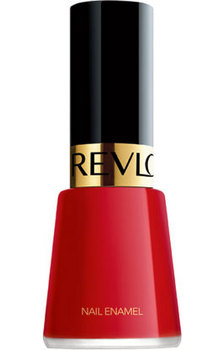
The Insightful bastard
Given my interest in the history and origins of brands I’m a bit embarrassed to say that for many years I laboured under the misapprehension that the founder of Revlon was Charles Revlon, not Charles Revson, but on discovering my error I decided there must be story there and indeed there was…
THE INSIGHTFUL BASTARD
“Look, kiddie. I built this business by being a bastard. I run it by being a bastard. I’ll always be a bastard, and don’t you ever try to change me.” So said Charles Haskell Revson to one of his senior colleagues.
Revson was known as a hard-working, hard-driven, highly competitive business executive who, on another occasion, said “I don’t meet the competition, I destroy it.”
He is perhaps most famous as the pioneering cosmetics industry executive who created and managed one of the world’s leading cosmetic houses through five decades.
When Elka, the cosmetics company he had been working for, didn’t promote him to the National distributor role he coveted, Revson decided to go into business for himself.
He teamed up with his brother, Joseph, and a chemist, Charles Lachman, and together they developed a unique manufacturing process which used pigments instead of dyes to create a new type of nail enamel in a variety of new attractive opaque colours. The story goes that Charles and Joseph were inspired by the scarlet-lipped, cigarette-smoking Hollywood actresses of their day, believing what these women needed were red nails to match their red lips.
Lachman contributed his skills at chemistry to the new company, as well as providing the ‘l’ for the new company’s name – Revlon.
Revlon’s polishes were originally sold in beauty parlours with Charles, as head salesman, known to put the nail polish on his own nails to demonstrate it and regularly criss-crossing the country by rail to promote it at every opportunity.
In 1937 Revlon started selling in department stores and drug stores but for Charles this was still just the beginning. By 1940, they offered an entire manicure line, had added lipstick to the collection and, along the way, had become a multimillion dollar organization. The expansion didn’t stop there; Revlon went on to enter the perfume and fragrance market with great success.

Charles’ drive to build the brand was never-ending and, in the mid-1950s, the company sponsored the quiz show “The $64,000 Question”, which was to become a television phenomenon and is said to have boosted sales considerably. However, the association wasn’t without controversy. Revson and his brother Martin, second in charge at the company, allegedly demanded that the producers control the questions in order to keep contestants winning and maintain the programme’s high ratings. This sparked what later became known as the quiz show scandal.
It is said that this together with Charles’ perfectionist nature drove many of his former colleagues and partners out.
However, it is for another side of his nature that Charles is now remembered. He was an intuitive and insightful marketer and the quote that is most often linked to his name is “In the factory we make cosmetics; in the drugstore we sell hope.”
Whilst it is perhaps politically incorrect, it highlights the difference between the functional nature of a product and the emotional appeal of a brand.
Footnote 1: Christian Louboutin apparently applied a Revlon red nail enamel to the soles of one of his early designs. It was a huge success and, so obviously, became a permanent fixture.
Footnote 2: Revson clearly wasn’t just a hard-nosed businessman in 1956, he established the Charles H. Revson Foundation, which he funded with over $10 million during his lifetime. The foundation funded schools, hospitals, and service organizations serving the Jewish community, mostly located in New York. Upon his death, Revson endowed the foundation with $68 million from his estate and granted the board of directors the discretion to chart the foundation’s future course. In 1978, the foundation began a formal grant-making process, and since that time, it has disbursed a total of $145 million in grants and its endowment has grown from $68 million to $141 million